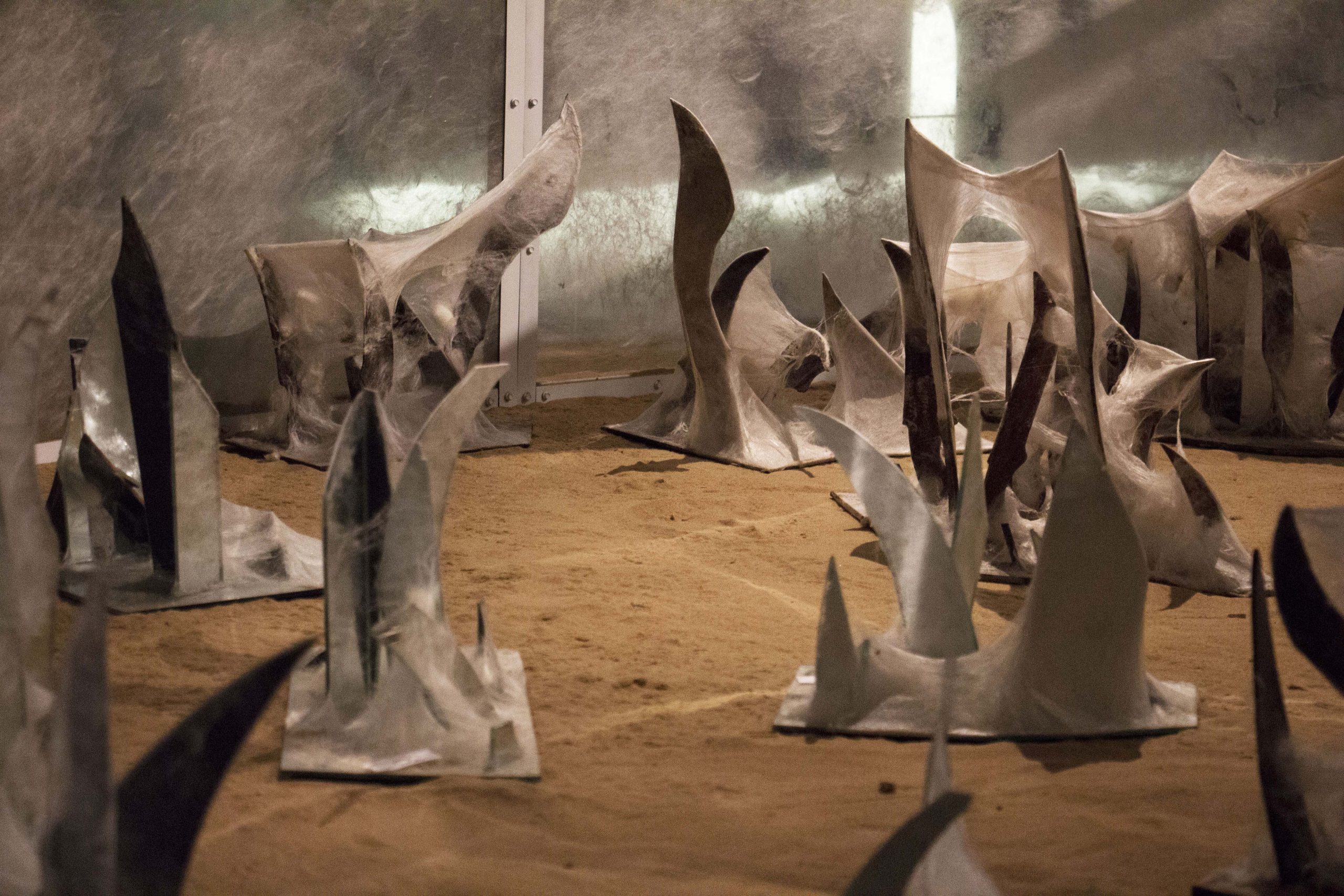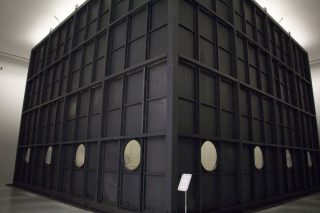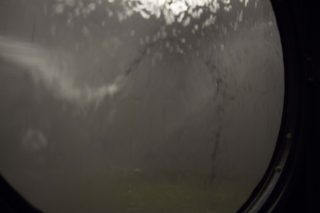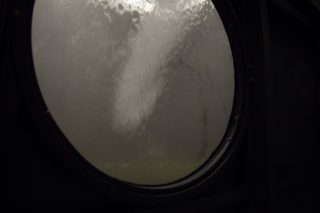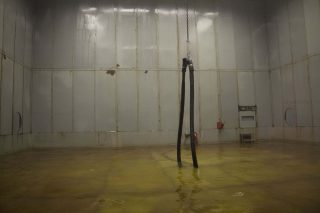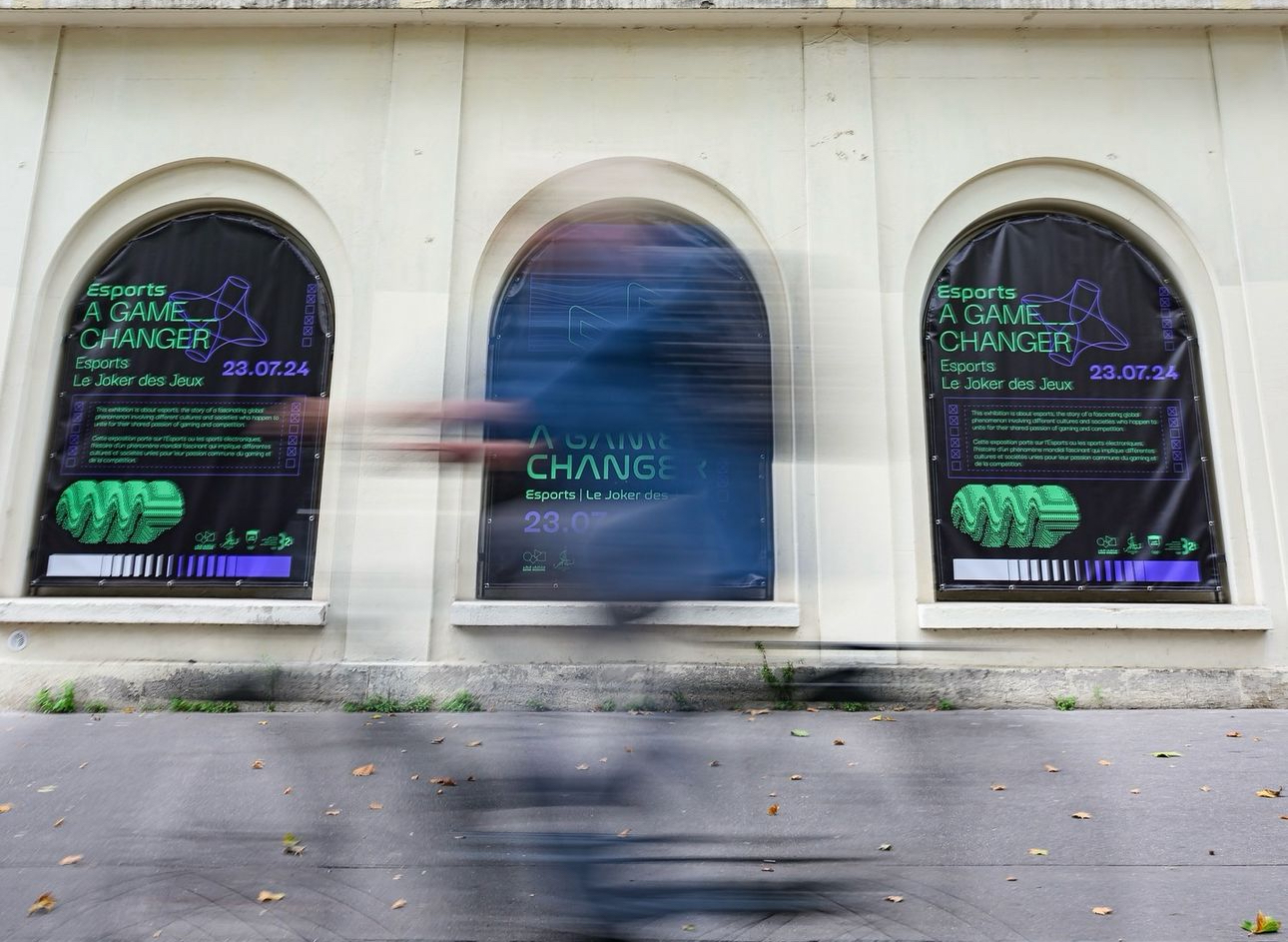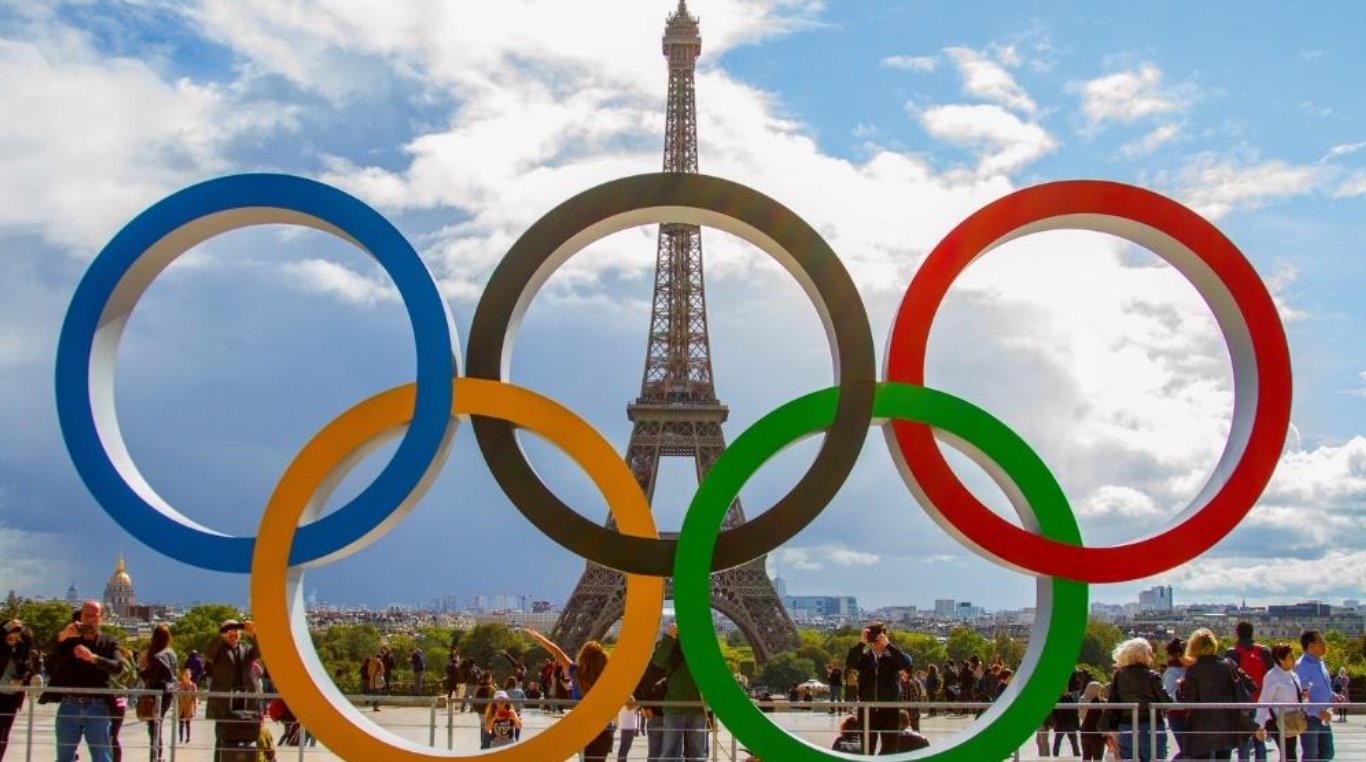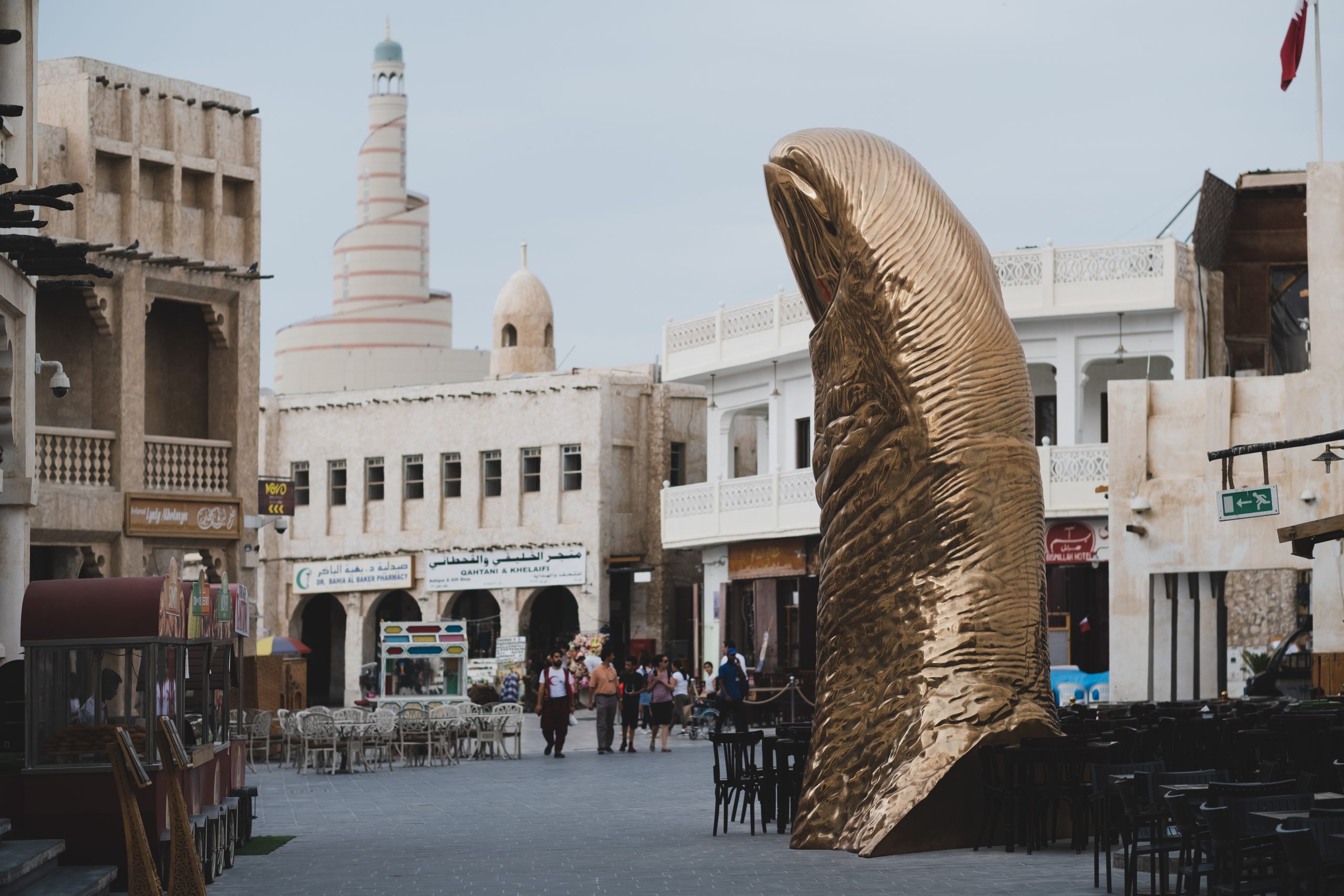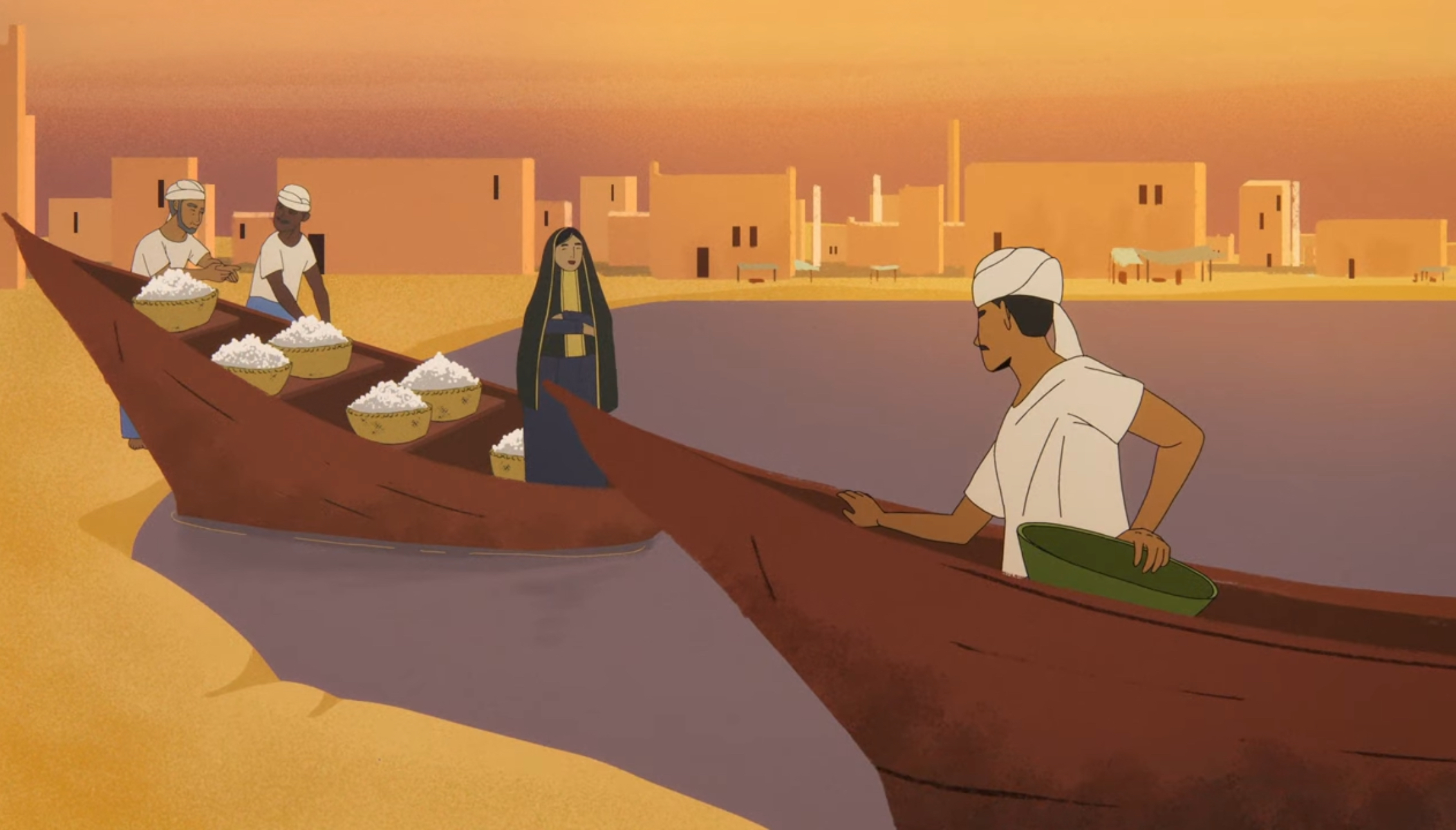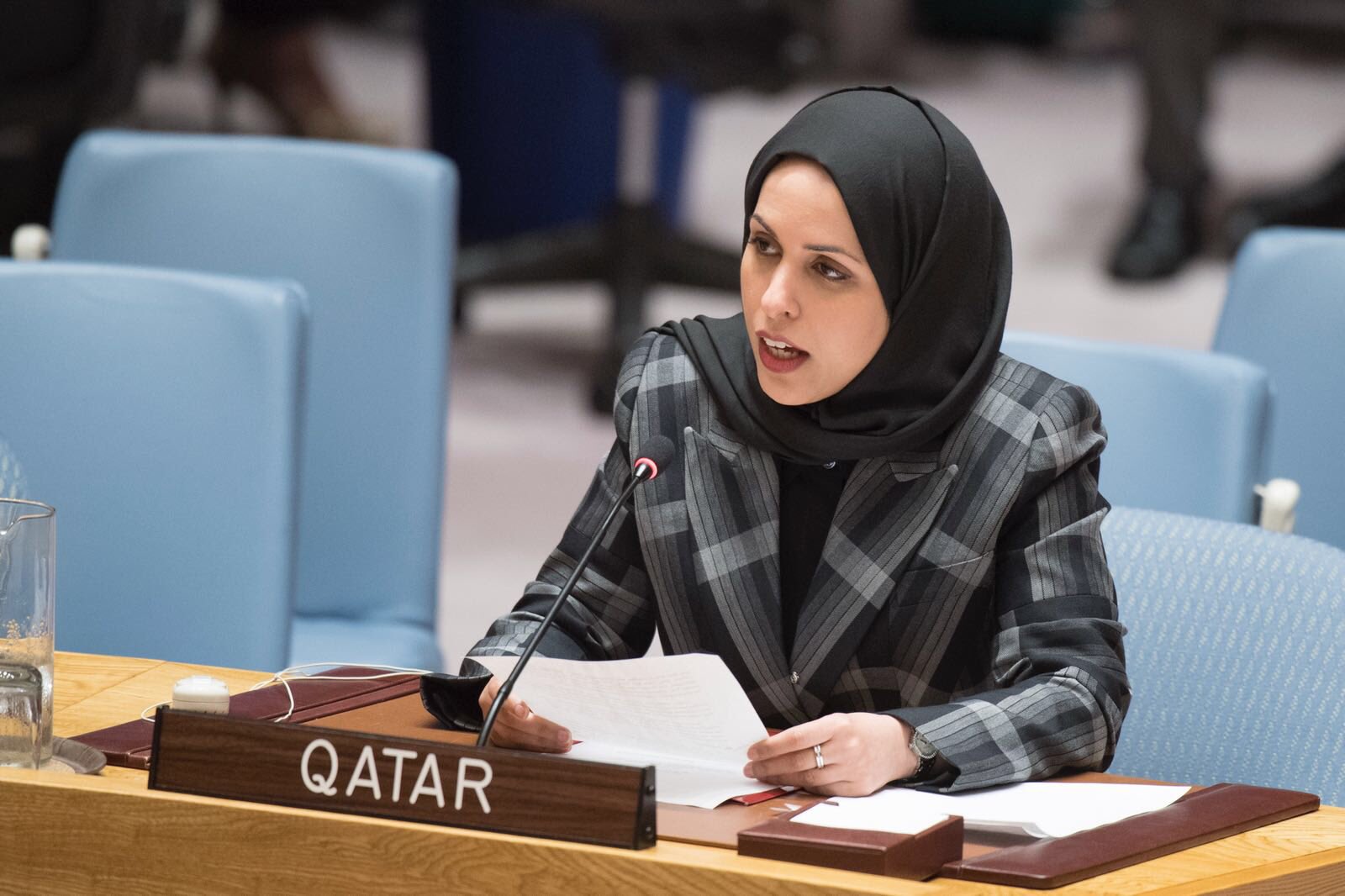
There are only a few days left to catch an exhibition that brings together the work of 15 Chinese artists in Qatar.
“What about the Art,” which implicitly includes social, political and cultural commentary about China from the artists, has been on display since March.
It’s at the Al Riwaq Gallery next to the Museum of Islamic Art, and was put up by Qatar Museums as part of the Qatar China 2016 Year of Culture.

Curated by New York-based artist Cai Guo-Qiang, the space gives each artist a separate gallery and explains their artistic language and methodology, while highlighting their creative pursuits.
From the dying work of thousands of silkworms to illuminated garbage bags to video games that toy with your emotions, here are six things we recommend you see before it ends on Saturday:
‘Moon Garden’
The “Moon Garden” installation includes two acrylic sheets that act as winding rivers. But the real art is entirely made from sand and silk.
Besides the “river,” sharp objects such as daggers, shattered mirrors and sabres are wrapped in strands of pure white silk – which are all the work of five generations of silkworms.

Some 37,000 silkworms worked on these objects for two years, and many were wounded and died in the process due to the sharp objects.
The installation credits both the silkworms and Shaoji.
Tiny sculptures
Hu Zhijun, a former peasant farmer, has made his debut at this exhibition with a display of 600 clay sculptures.

The small sculptures reproduce works from contemporary Chinese art, such as oil paintings, video art, performance art, architecture and design.
A closer look shows intricately-detailed figures praying, teaching, fighting, laughing, crying and more. The architectural designs show arches, classrooms and even religious places.
Business in the front…
From the front, Xu Bing’s “Background Story” seems like a classic Chinese scroll painting of mountains and huts within.

But from the back, the actual composition of the painting is shown, and is comprised of branches, plastic bags, leaves, tufts of cotton and mud. Lit from behind, the colorful plastic bags and other trash objects create the mountains, rivers and clouds upfront.

The installation is a visual description of how the past meets the present, according to the explanation of the artwork.
Emotional video games
An unlikely form of art, Chinese-American game designer Jenova Chen’s work aim to invoke various emotions as players go through the game of life.
They can do this only by changing music, taking action and varying vibrations on the controller.
The exhibit allows visitors to play three of the games: “Flower,” “Flow” and “Journey.”

A documentary shows how Chen and his team created “Journey” and what the art and game mean to them.
The game itself represents the idea of life as the character starts from the disorientation and confusion of childhood and progresses to the hardships of adulthood.
Storm of light
Titled, “The Furthest Distance in a Paradise Interrupted,” Jennifer Wen Ma creates a multimedia room that uses sound, projection, glass panels and other tools to give visitors a “utopian landscape where time and the physical dimensions appear to merge.”

The room changes from light to darkness, highlighting the inky mountain drawings on the walls in different dimensions.
Meanwhile, the light work on the floor responds to motion, surrounding visitors in a storm of light.
‘Freedom’
This is by far one of the most unique installations at the exhibition, and was designed by Sun Yuan and Peng Yu, two of China’s most controversial artists.
They have previously worked with human fat tissue, live animals and baby cadavers to present works about perception, death and the human condition. Though in Qatar, their exhibition involves some tamer mediums.
An iron box sits in the middle of the gallery with windows installed to the sides. Inside, a black hose is suspended.
When it turns out, water gushes from the hose at very high pressures, leading to violent contraction from the hose.
The installation turns on for minute every hour at the hour, and is definitely worth the show.
Opening hours
Al Riwaq is open from 10:30am to 5:30pm from Sunday to Wednesday, noon to 8pm on Thursday and Saturday, and from 2pm to 8pm on Friday. The gallery is closed on Tuesdays.
What are you looking forward to seeing at the exhibition? Thoughts?

